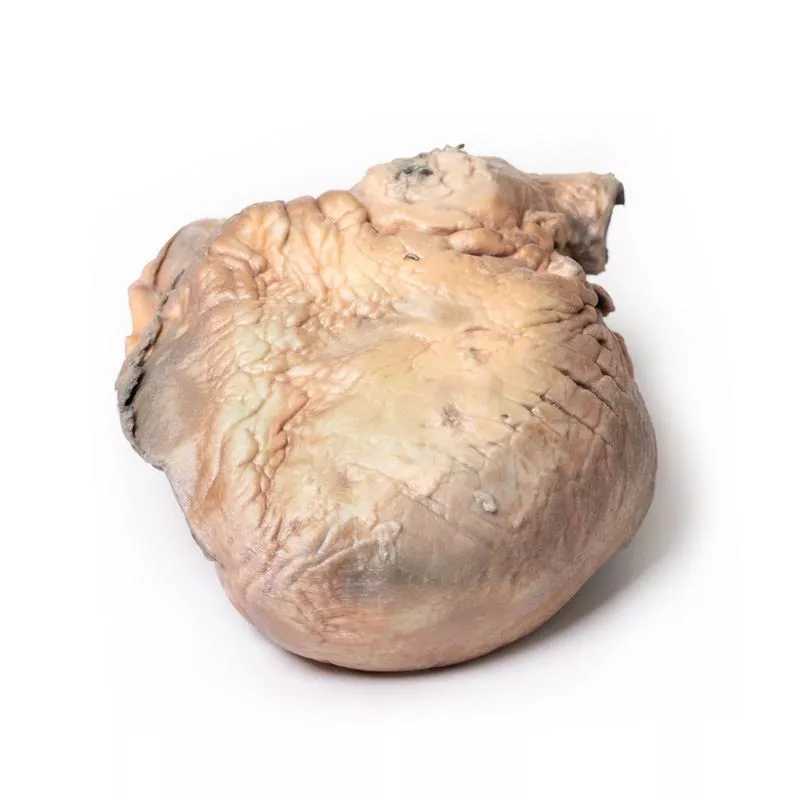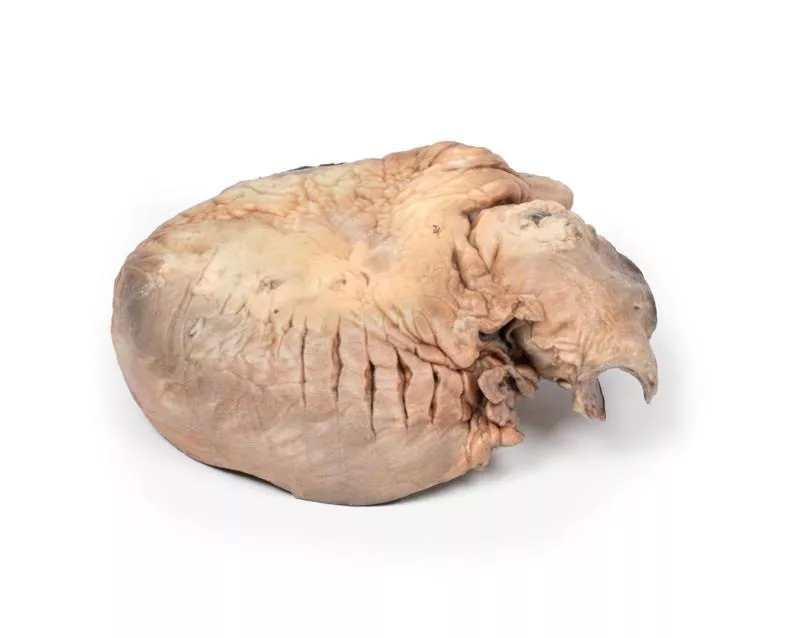Product information "Ruptured Thoracic Aortic Aneurysm"
Clinical History
No clinical details are available for this specimen.
Pathology
The heart is shown from the posterior aspect, displaying both ventricles. A prominent saccular dilatation of the ascending thoracic aorta is present, featuring several atherosclerotic plaques. The aorta is ruptured posteriorly, indicated by dark staining. Both ventricles are hypertrophied, while the coronary arteries and aortic and tricuspid valves appear normal. This represents a ruptured aneurysm of the ascending aorta.
Further Information
Dilation of the ascending aorta is often an incidental finding on transthoracic echocardiography. The thoracic aorta consists of three parts: ascending, arch, and descending. The ascending aorta begins just beyond the aortic valve and ends before the brachiocephalic trunk, measuring about 5 cm in length. It includes the aortic root (with coronary sinuses and sinotubular junction) and the tubular ascending aorta. Over 50% of thoracic aortic aneurysms occur here, affecting either the root or tubular segment. An aneurysm is a localized dilation of the aorta exceeding 50% of the expected diameter (observed/expected ratio = 1.5) and differs from ectasia, which is a diffuse dilation less than 50%. The incidence of ascending thoracic aortic aneurysms is about 10 per 100,000 person-years.
Reference: Saliba et al. (2015). Int J Cardiol Heart Vasc. 6: 91–100.
No clinical details are available for this specimen.
Pathology
The heart is shown from the posterior aspect, displaying both ventricles. A prominent saccular dilatation of the ascending thoracic aorta is present, featuring several atherosclerotic plaques. The aorta is ruptured posteriorly, indicated by dark staining. Both ventricles are hypertrophied, while the coronary arteries and aortic and tricuspid valves appear normal. This represents a ruptured aneurysm of the ascending aorta.
Further Information
Dilation of the ascending aorta is often an incidental finding on transthoracic echocardiography. The thoracic aorta consists of three parts: ascending, arch, and descending. The ascending aorta begins just beyond the aortic valve and ends before the brachiocephalic trunk, measuring about 5 cm in length. It includes the aortic root (with coronary sinuses and sinotubular junction) and the tubular ascending aorta. Over 50% of thoracic aortic aneurysms occur here, affecting either the root or tubular segment. An aneurysm is a localized dilation of the aorta exceeding 50% of the expected diameter (observed/expected ratio = 1.5) and differs from ectasia, which is a diffuse dilation less than 50%. The incidence of ascending thoracic aortic aneurysms is about 10 per 100,000 person-years.
Reference: Saliba et al. (2015). Int J Cardiol Heart Vasc. 6: 91–100.
Erler-Zimmer
Erler-Zimmer GmbH & Co.KG
Hauptstrasse 27
77886 Lauf
Germany
info@erler-zimmer.de
Achtung! Medizinisches Ausbildungsmaterial, kein Spielzeug. Nicht geeignet für Personen unter 14 Jahren.
Attention! Medical training material, not a toy. Not suitable for persons under 14 years of age.

































